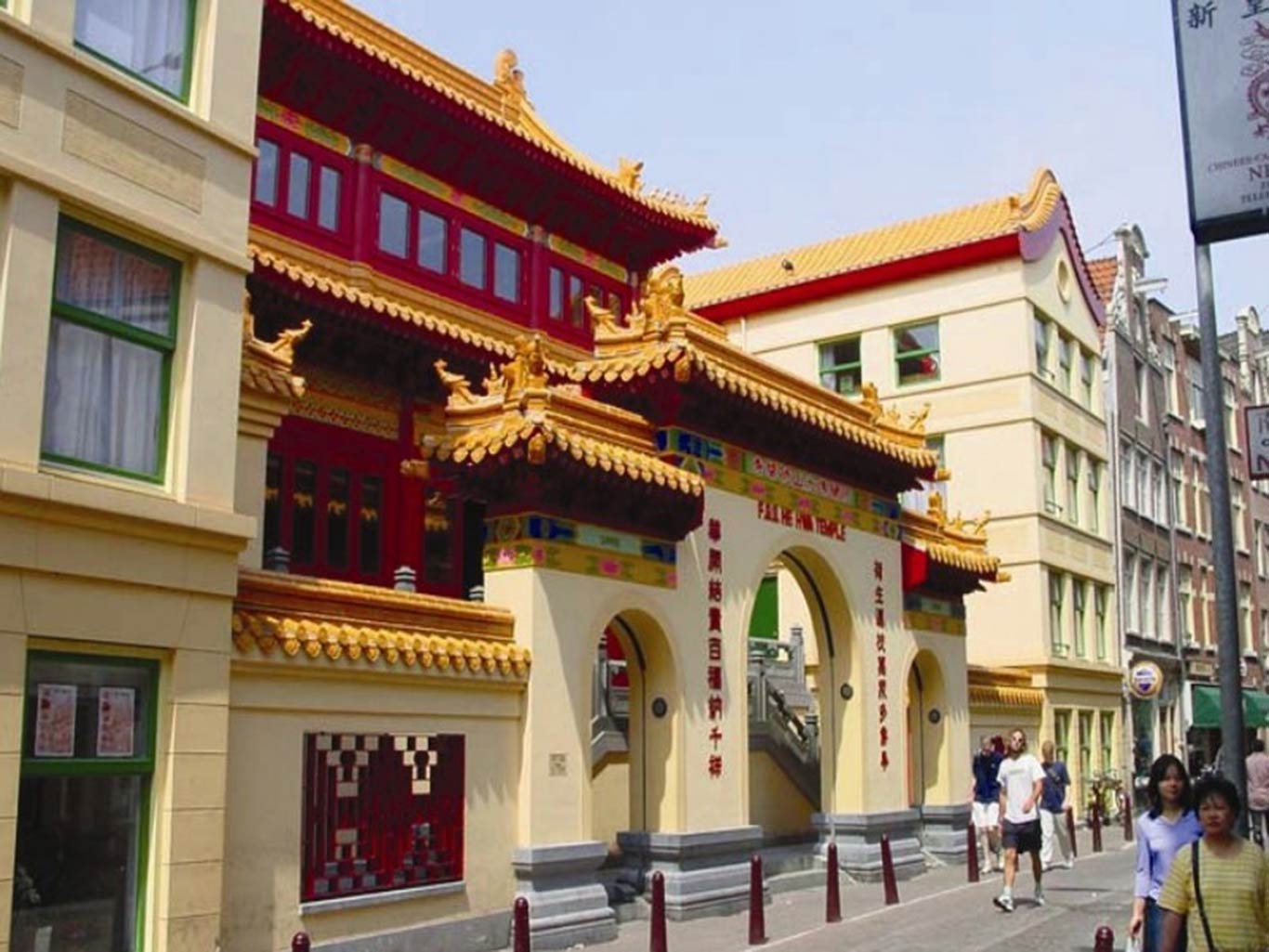Buddhist Temple Fo Guang Shan
Located in the Amsterdam Chinatown quarter, the Fo Guang Shan Temple is the largest temple in Europe that has been built in traditional Chinese palace style. Although the style of the temple is Chinese, Buddhism, of course, is both universal and beyond architectural features and culture. The buildings to the left and the right of the temple houses the Buddhist nuns and a library.
The Fo Guang Shan Amsterdam Buddhist temple is a meditation centre where organizing services is an option. Guided tours and courses are also available.
Special roof tiles and many characteristic ornaments were flown in especially from China for this temple. The animals on the roof represent the Chinese Zodiac. The dragon stands for the protection of the temple and the quarter.
A Buddhist monastery’s front entrance is literally called “mountain gate” in Chinese, referring to the traditional mountain setting of monasteries. He Hua’s main gate is constructed in a style traditional to Chinese Buddhist temples: a large central opening flanked by two smaller openings. Nuns and monks traditionally enter through the main gate, while layman use the side gates. The steps of the stairs symbolizes the idea of practicing Buddhism step-by-step that gradually leads to enlightenment.
Kuan Yin Shrine
Inside the main shrine, the Kuan Yin Shrine, you can see a prominent statue of Avalokitesvara Bodhisattva, known as Kuan Yin in Chinese. Avalokitesvara can be loosely translated as “the compassionate sage who sees,” referring to this Bodhisattva’s ability to see all the suffering in the world and thus come to people’s aid. She is said to have one thousand eyes and hands with which to save all sentient beings. She is also an attendant to Amitabha Buddha and guides people to his Western Pure Land. A small figure of Amitabha is thus frequently shown in the centre of her headpiece.
Kuan Yin takes a variety of forms; the Main Shrine’s primary statue portrays her with a third eye in the middle of her brows, and multiple hands. The several postures of the hands, also known as mudra’s, are used in statues to express several Buddhist concepts and episodes in the life of Buddha. Each posture has often a deeper meaning that cannot be expressed in words. Likewise each different body posture of the statues — reclining, sitting or standing — has a symbolic meaning.
The architecture of the Buddhist nunnery and the library makes for an unusual transition between the Chinese temple and the Dutch buildings adjoining it.
The Fo Guang Shan Amsterdam Temple is open all week, but only has guided tours (30 minutes) on Saturdays.
Chinatown is the area between Stormsteeg, Gelderse Kade and Zeedijk
Address:
Zeedijk 106-118, Amsterdam
Neighborhood: Amsterdam City Centre
Hours:
Mon to Sat: 12.00 to 17.00
Sun: 10.00 to 17.00
Website: Buddhist Temple Fo Guang Shan

